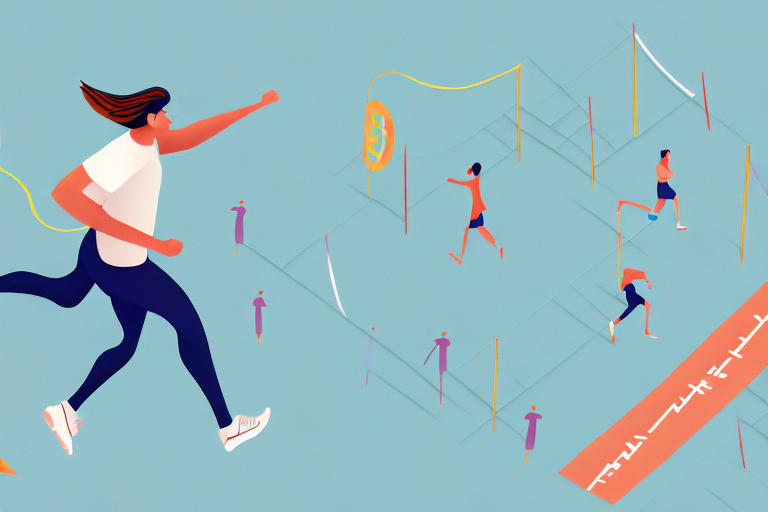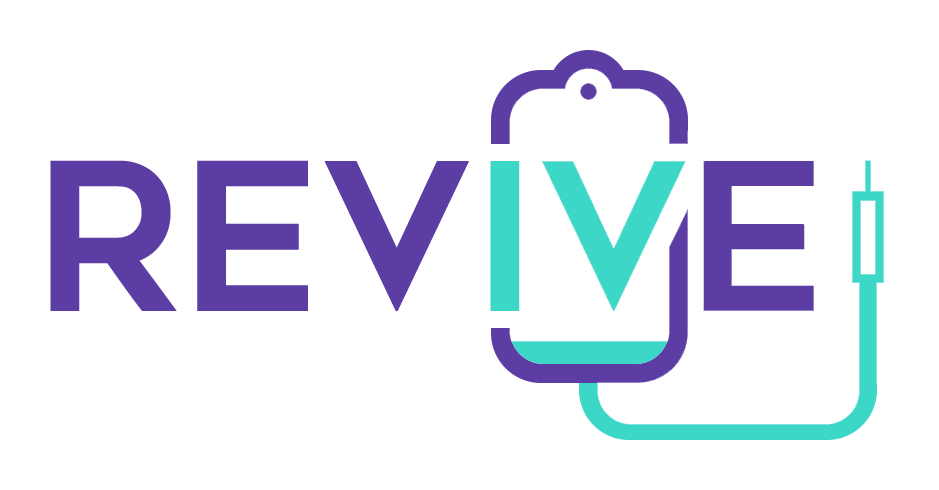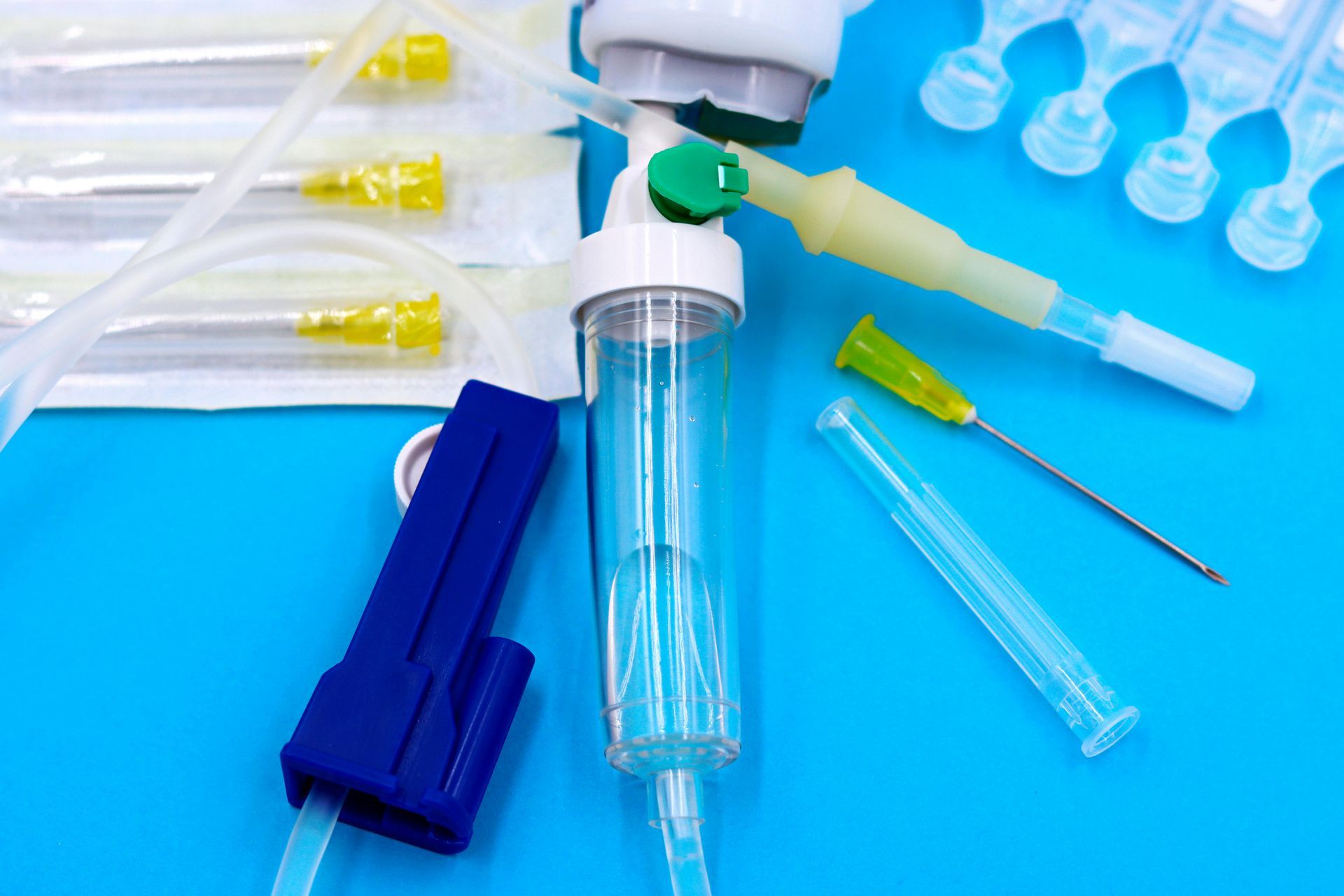Best Post Marathon Recovery: 7 Tips for Faster, Safer Healing

Completing a marathon is an incredible accomplishment that takes months of dedication and hard work. However, the end of the race is just the beginning of your journey towards full recovery. Proper post-marathon recovery is essential to prevent injuries, improve performance, and prepare for your next running challenge. In this article, we will explore seven tips to help you recover after a marathon.
Understanding the Importance of Post-Marathon Recovery
Many runners focus on their race training plan but neglect the crucial post-marathon recovery period. Recovery is the time when your body repairs damaged muscle tissue, replenishes energy stores, and strengthens bones and joints. Ignoring recovery can lead to injuries, chronic fatigue, and burnout. Therefore, it is crucial to prioritize post-marathon recovery to ensure optimal health and performance.
During a marathon, your body undergoes significant physical stress. The repetitive impact of running can cause micro-tears in your muscles, leading to soreness and inflammation. Your body also depletes its energy stores, such as glycogen, which is essential for muscle function. After the race, your body needs time to recover and replenish these stores to prevent injury and optimize performance in future races.
The Physical and Mental Benefits of Proper Recovery
Proper recovery has numerous benefits for both your body and mind. Physically, it can reduce the risk of injuries, fatigue, and inflammation. It can also improve immune system function, bone density, and muscle elasticity. Mentally, recovery can lower stress levels, boost mood and motivation, and help you return to running with a positive mindset.
Research has shown that taking time to recover after a marathon can improve your overall performance in future races. By allowing your body to fully recover, you can prevent burnout and reduce the risk of injury. This, in turn, allows you to train more effectively and achieve better results in your next race.
How Long Should Your Recovery Period Last?
Every runner's body is different, and the recovery period can vary depending on various factors, such as race distance, running experience, and age. A general rule is to take at least one day of complete rest for every mile of the race. Therefore, for a marathon, the recovery period should last for at least 26 days. However, recovery is not a one-size-fits-all approach, and you should listen to your body's signals for when to start running again.
During your recovery period, it is essential to prioritize rest and recovery techniques such as stretching, foam rolling, and massage. These techniques can help reduce muscle soreness and inflammation, allowing your body to recover more quickly. You can also incorporate low-impact activities such as swimming or cycling to maintain cardiovascular fitness without putting stress on your muscles.
It is also crucial to pay attention to your nutrition during the recovery period. Your body needs a balance of carbohydrates, protein, and healthy fats to repair and rebuild muscle tissue. Aim to eat nutrient-dense foods such as fruits, vegetables, lean proteins, and whole grains. You can also consider taking supplements such as omega-3 fatty acids or protein powder to support your recovery.
In conclusion, post-marathon recovery is a crucial part of any runner's training plan. By prioritizing rest, recovery techniques, and proper nutrition, you can reduce the risk of injury, improve performance, and return to running with a positive mindset. Remember to listen to your body's signals and take the time you need to fully recover before jumping back into training.

Tip 1: Prioritize Rest and Sleep
Rest and sleep are the foundation of post-marathon recovery. Your body needs time to heal and regenerate, which is why it's essential to take a break from running and allow your muscles to rest. Moreover, sleep is critical in repairing muscle tissue, balancing hormones, and improving cognitive function, all of which can benefit your running performance.
After a marathon, your body is likely to be fatigued and sore. Taking a break from running and other high-impact activities can help prevent further damage to your muscles and joints. Instead, focus on low-impact activities like walking, yoga, or swimming to keep your body moving without putting too much stress on your muscles.
The Role of Sleep in Muscle Recovery
During sleep, your body produces growth hormones that aid in muscle repair and strengthening. Moreover, sleep improves blood flow and nutrient delivery to your muscles, which helps to reduce inflammation and soreness. Aim for 7-8 hours of sleep per night, and prioritize quality sleep by minimizing distractions and creating a relaxing sleep environment.
Creating a bedtime routine can help signal to your body that it's time to wind down and prepare for sleep. Try taking a warm bath, reading a book, or practicing relaxation techniques like deep breathing or meditation.
Creating a Sleep-Friendly Environment
To improve the quality of your sleep, create a sleep-friendly environment by reducing noise, light, and temperature. Use blackout curtains, earplugs, and eye masks if necessary, and adjust your room temperature to a cool setting. Avoid using electronic devices before bedtime and limit caffeine intake, especially in the afternoon or evening.
Additionally, consider investing in a comfortable mattress and pillows that support your body and promote proper alignment. A supportive sleep surface can help reduce aches and pains, improve sleep quality, and promote faster muscle recovery.
Tip 2: Refuel Your Body with Proper Nutrition
Completing a marathon is an impressive feat that requires a lot of physical and mental strength. After crossing the finish line, your body needs proper nutrition to help it recover and replenish the energy stores lost during the race.
Food is fuel, and post-marathon nutrition is crucial in repairing muscle tissue, supporting your immune system, and maintaining a healthy weight. Proper nutrition can also prevent post-race cravings, which can lead to unhealthy snacking.
The Importance of Carbohydrates and Protein
Carbohydrates are the primary source of energy for endurance athletes. Therefore, it's essential to consume enough carbohydrates to replenish your glycogen stores. Aim for 3-5 grams of carbohydrates per pound of body weight per day.
High-protein foods are also vital in repairing muscle tissue. Aim for 0.55 to 0.77 grams of protein per pound of body weight per day. Foods rich in protein include chicken, fish, eggs, nuts, and beans.
It's essential to consume a balance of carbohydrates and protein. A good rule of thumb is to aim for a 3:1 or 4:1 ratio of carbohydrates to protein.
Hydration and Electrolyte Balance
Staying hydrated is crucial in maintaining proper bodily functions, regulating temperature, and preventing dehydration-related issues. Drink enough water and electrolyte-balanced fluids to replenish fluids lost during the marathon.
Electrolytes are minerals that help regulate the body's fluid balance, muscle function, and pH levels. Sodium, potassium, calcium, and magnesium are essential electrolytes that can be lost through sweating during a marathon.
Add some sodium and potassium-rich foods to restore electrolyte balance. Foods rich in sodium include pickles, olives, and pretzels. Potassium-rich foods include bananas, sweet potatoes, and spinach.
Avoid alcohol and caffeine drinks as they can increase dehydration. Instead, opt for water, sports drinks, or coconut water, which are all excellent sources of hydration.
By following these nutrition tips, you can help your body recover and prepare for future races. Remember to listen to your body and give it the proper nutrients it needs to thrive.

Tip 3: Utilize Active Recovery Techniques
Active recovery is a crucial part of any training plan, but it's especially important after a race. After pushing your body to its limits, it's important to give it the time and care it needs to recover properly. Active recovery involves low-impact sporting activities that help to improve blood flow, reduce inflammation, and prevent muscle soreness. Incorporating active recovery into your post-race plan can promote faster healing and improve mobility.
Gentle Stretching and Yoga
Gentle stretching and yoga are two great ways to incorporate active recovery into your post-race plan. Not only do they help to release tight muscles and improve flexibility, but they also promote relaxation and mindfulness. When stretching, focus on areas that feel tight or sore, and hold each stretch for at least 30 seconds. This will help to increase blood flow to the targeted area and promote healing. Yoga is also a great way to improve balance, dexterity, and mindfulness. By focusing on your breath and your body, you'll be able to tune out distractions and reduce stress levels.
Low-Impact Cross-Training Activities
In addition to stretching and yoga, low-impact cross-training activities can also be beneficial for post-race recovery. Activities such as swimming, cycling, or walking can help to maintain cardiovascular fitness without exerting pressure on your joints. These activities can also promote the release of endorphins, which help to reduce pain and stress levels. Swimming, in particular, is a great choice for post-race recovery, as it provides a full-body workout without putting any pressure on your joints. If you're not a strong swimmer, consider taking a water aerobics class or simply walking laps in the pool.
Remember, active recovery is all about giving your body the time and care it needs to recover properly. By incorporating gentle stretching, yoga, and low-impact cross-training activities into your post-race plan, you'll be able to speed up the healing process and get back to training in no time.

Tip 4: Focus on Muscle Care and Massage
Perform these exercises to regain strength and prevent future injuries:
- Hamstring curls: Stand behind a chair and hold on to the backrest for support, then lift one foot towards your back, bending your knee. Repeat this exercise 10 times on each leg.
- Bridge: Lie on your back with your knees bent and feet flat on the ground, then slowly lift your hips towards the ceiling. Hold this position for five seconds and repeat 10 times.
- Single-leg deadlift: Stand on one foot and bend forward, reaching for the ground with the opposite hand. Repeat this exercise 10 times on each leg.
Strengthening exercises are essential for preventing future injuries because they help to build up the muscles in the hamstring group. Strong muscles are less likely to be injured, and they can help to support the joints and improve overall athletic performance.
Remember to take it slow when you are recovering from a hamstring injury. Rushing back into physical activity too quickly can cause further damage and delay your recovery. Work with your physical therapist to develop a recovery plan that is tailored to your needs and abilities.
Foam Rolling and Self-Massage Techniques
Recovery is an essential part of any exercise routine. It is during the recovery phase that the body repairs and strengthens the muscles that have been worked out. While rest is an important factor in recovery, nutrition also plays a crucial role in aiding the body's natural healing process. Proper nutrition can help promote muscle healing and recovery.
It is important to eat a healthy, balanced diet with sufficient protein, carbohydrates, and vitamins. Protein is essential for muscle repair and growth, while carbohydrates provide the body with energy to perform physical activities. Vitamins and minerals are also crucial for overall health and wellness.
When to Seek Professional Massage Therapy
While foam rolling and self-massage are great techniques for at-home recovery, professional massage therapy can help to address deeper muscle issues and promote relaxation. Consider seeing a licensed massage therapist for a full-body massage or trigger-point therapy. Trigger-point therapy involves applying pressure to specific points on the body to release tension and alleviate pain.
It's important to note that you should avoid getting a deep-tissue massage immediately after the marathon as your muscles may still be inflamed. Instead, wait a few days to allow your body to recover before scheduling a professional massage.
In conclusion, muscle care and massage are essential components of post-marathon recovery. Incorporating these techniques into your recovery plan can help to promote faster healing, improve mobility, and prevent injuries. Whether you choose to foam roll at home or seek professional massage therapy, taking care of your muscles is crucial for a successful recovery.
Tip 5: Listen to Your Body and Adjust Your Training Plan
Your body is the best indicator of when to start running again after a marathon. While it's important to follow a gradual training plan that allows for sufficient recovery and adjustment to your body's signals, there are other factors to consider as well.
One of the most important things to pay attention to is your nutrition. After running a marathon, your body needs time to recover and replenish the nutrients it lost during the race. Make sure you're eating a balanced diet with plenty of protein, carbohydrates, and healthy fats to help your body recover.
Identifying Signs of Overtraining or Injury
It's also important to be aware of signs of overtraining or injury. While pushing yourself is important to improve your running, it's equally important to know when to take a step back. Persistent soreness, fatigue, or joint pain can all be signs that you're pushing yourself too hard. If you experience any of these symptoms, take additional rest days and seek medical advice if necessary.
Another thing to consider is your sleep habits. Getting enough rest is crucial for your body to recover and adapt to the physical demands of running. Aim for 7-8 hours of sleep per night and try to establish a consistent sleep schedule to help your body recover more efficiently.
Modifying Your Training Schedule for Optimal Recovery
When returning to physical activity after a hamstring injury, it is important to start slowly and gradually increase your level of activity. This will help prevent re-injury and allow your body to adjust to the demands of exercise. Here are some tips:
- Start with gentle exercises, such as walking or swimming. These low-impact activities will help improve your cardiovascular endurance and build strength in your hamstrings without putting too much stress on the injured area.
- Gradually increase the intensity and duration of your workouts. As your strength and flexibility improve, you can start to incorporate more challenging exercises, such as jogging or cycling. Just remember to take it slow and listen to your body.
- Take rest breaks as needed to avoid overuse. It is important to give your muscles time to rest and recover between workouts. If you feel any pain or discomfort, take a break and allow your body to heal.
Tip 6: Incorporate Mental Recovery Strategies
Mental recovery is an essential part of any training regimen. It helps you stay motivated, focused, and energized. Here are some strategies you can incorporate to reduce stress, boost motivation, and maintain a positive attitude towards running.
Meditation and Mindfulness Practices
Meditation and mindfulness practices are effective ways to reduce stress levels, improve sleep quality, and enhance self-awareness. Spend a few minutes every day breathing deeply and focusing on your inner self. You can sit quietly, close your eyes, and focus on your breath. As you inhale and exhale, notice the sensation of the air moving in and out of your body. If your mind begins to wander, gently bring it back to your breath. Consider taking a mindfulness meditation class or using a meditation app to guide you through the process.
Mindfulness can also be practiced while running. Instead of focusing on your pace, time, or distance, try to focus on your breath and the sensations in your body. Pay attention to the sights, sounds, and smells around you. This can help you stay present and enjoy the experience of running without worrying about the outcome.
Reflecting on Your Marathon Experience
Reflecting on your marathon experience can help you celebrate your accomplishments, learn from your mistakes, and prepare for your next running challenge. Take some time to write down your thoughts, emotions, and lessons learned from the race. What worked well for you? What could you have done differently? What did you learn about yourself?
Use this reflection as a way to learn, grow, and improve. You can also share your experience with other runners, either in person or online. This can help you connect with a community of like-minded individuals who share your passion for running.
Remember, mental recovery is just as important as physical recovery. By incorporating these strategies into your training regimen, you can stay motivated, focused, and energized, and achieve your running goals.
Tip 7: Celebrate Your Accomplishment and Set New Goals
Congratulations on completing your running goal! It takes a lot of hard work and dedication to achieve something like this, so take a moment to celebrate your accomplishment.
Reflect on the journey you took to get here. Think about the early mornings, the tough workouts, and the days when you just didn't feel like running. Remember how you pushed through those moments and kept going, even when it was difficult.
Now, it's time to reward yourself for all that hard work. Treat yourself to something that you've been wanting for a while. Maybe it's a new pair of running shoes, a massage, or a relaxing day at the spa. Whatever it is, make sure it's something that you'll enjoy and that will make you feel good.
Rewarding Yourself for a Job Well Done
When you reward yourself for your hard work, you're reinforcing the positive habits that got you to where you are today. You're also giving yourself the motivation to keep going and to set new goals for the future.
So, take some time to enjoy your reward. Savor the moment and let yourself feel proud of what you've accomplished.
Planning Your Next Running Challenge
After you've celebrated your accomplishment, it's time to start thinking about your next challenge. Setting new goals is a great way to maintain your motivation and to keep improving your running abilities.
Think about what you want to achieve next. Maybe you want to run a longer distance, set a new personal record, or compete in a race that you've never done before. Whatever it is, make sure it's a goal that excites you and that will challenge you.
Once you've identified your goal, it's time to start planning. Create a new training plan that will help you achieve your goal. Think about what worked well during your last training cycle and what you could improve on.
Don't forget to adjust your nutrition and recovery strategies as well. Fueling your body properly and taking care of yourself after your runs is just as important as the training itself.
Finally, use the lessons you learned from your previous race to inform your training plan. Think about what worked well and what you could improve on. Use that knowledge to make informed decisions and to set yourself up for success.
Remember, setting new goals is a great way to maintain your motivation and to keep improving your running abilities. So, celebrate your accomplishment, reward yourself, and then get ready to tackle your next challenge!
In Conclusion
Post-marathon recovery is an essential part of your running journey. Use these seven tips to prioritize rest and sleep, refuel your body with proper nutrition, utilize active recovery techniques, focus on muscle care and massage, listen to your body, incorporate mental recovery strategies, and celebrate your accomplishments. With proper recovery, you can prevent injuries, strengthen your body, and prepare for your next running challenge.










